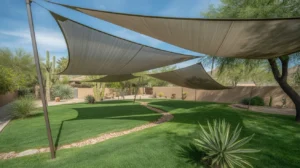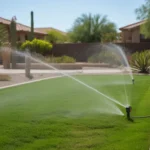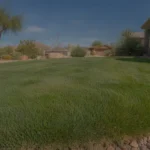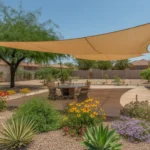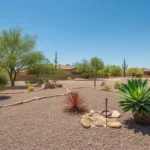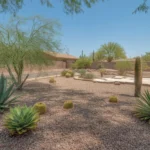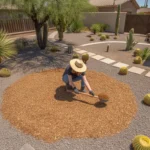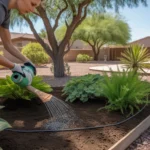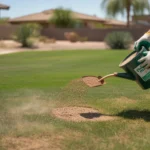Summertime in the Southeast Valley can be a scorcher, but that doesn’t mean your yard has to suffer. By pairing desert-adapted grasses with strategically placed shade sails, you can create a cool, inviting oasis that thrives all season long. Here’s how to make this dynamic duo work for your space.
Why Desert Grasses Love Shade Sails
Desert grasses like blue grama, buffalo grass, and deer grass are naturally adapted to handle the intense heat and sun of the Southwest. However, even these hardy species appreciate a little respite from the midday rays. That’s where shade sails come in.
By installing a few well-placed shade sails over key areas of your lawn, you provide much-needed relief during the hottest hours of the day. This allows your grass to conserve moisture, reduce stress, and maintain its lush, green appearance without getting scorched.
Shade sails also help to lower the surrounding air temperature by several degrees, creating a more comfortable microclimate for both your grass and your family to enjoy. It’s like having a permanent, stylish umbrella shielding your yard from the intense summer heat.
Choosing the Right Desert Grasses
When selecting desert grasses to pair with your shade sails, look for varieties that are well-suited to the Southeast Valley’s climate and soil conditions. Some top picks for our area include:
- Blue Grama: This native bunchgrass forms an attractive, fine-textured turf that’s highly drought-tolerant and low-maintenance. It thrives in full sun but also appreciates light, dappled shade.
- Buffalo Grass: A warm-season grass known for its deep roots and ability to withstand heat and drought. Buffalo grass forms a dense, soft lawn that’s perfect for lounging under a shade sail.
- Deer Grass: An ornamental bunch grass with upright, clumping growth and airy seed heads. Deer grass adds textural interest to shaded areas and requires minimal water once established.
By choosing grasses that are naturally adapted to our desert conditions, you’ll have a lawn that’s better able to handle the challenges of summer while still looking lush and inviting.
Placing Your Shade Sails for Maximum Impact
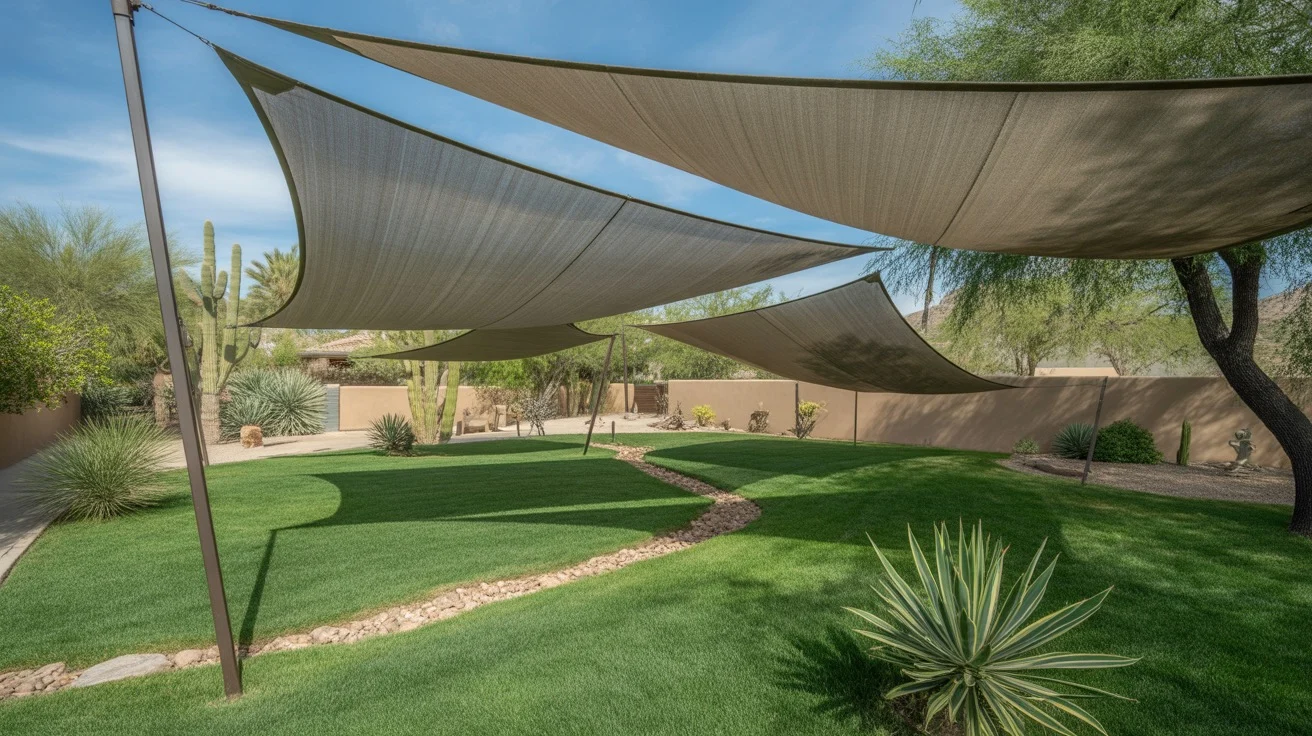
To get the most benefit from your shade sails, it’s important to position them strategically over your lawn area. Consider factors like:
- Sun Angle: Observe how the sun moves across your yard throughout the day and place sails to block the most intense midday rays.
- Coverage Area: Aim to shade key gathering spots like patios, play areas, or lounging zones to maximize comfort and usability.
- Airflow: Position sails to allow for good air circulation, which helps to cool the space and prevent moisture buildup on grass.
You can install multiple sails to create overlapping zones of shade or use a single large sail for a cohesive look. Experiment with different heights and angles to cast shade right where you need it most.
Don’t forget to secure your sails properly using sturdy poles or attachment points on your home or ramada. You want them to stay put even on breezy days and provide reliable shade all season.
Watering & Maintenance Tips
While shade sails help desert grasses conserve moisture, you’ll still need to water regularly to keep your lawn healthy. Aim to give grasses a deep watering 1-2 times per week, depending on your soil type and current weather conditions.
It’s best to water in the early morning hours before the sun is at full strength. This allows grass to absorb moisture efficiently and gives foliage time to dry before nightfall, reducing the risk of fungal issues.
In terms of maintenance, desert grasses typically require less mowing and upkeep compared to traditional turf. However, you’ll still want to trim periodically to maintain a neat appearance and remove any brown, dried tips.
If your grass seems to be struggling even with shade sail protection, check for signs of nutrient deficiency or pest stress. Applying a slow-release, organic fertilizer or treating for specific issues can help restore your lawn’s vigor.
Incorporating Other Shade-Loving Plants
In addition to desert grasses, consider adding other shade-loving plants beneath your sails to create a lush, layered look. Some great options for the Southeast Valley include:
- Texas Lilac Vitex: A hardy, fast-growing shrub with fragrant purple flower spikes that attract butterflies and hummingbirds.
- Yellow Dot Plant: A low-growing groundcover with delicate yellow flowers and soft, fern-like foliage that thrives in shaded areas.
- Autumn Sage: An evergreen perennial with vibrant red, pink, or coral tubular flowers that bloom spring through fall.
By mixing in a variety of plants with different heights, textures, and colors, you can create a rich, inviting landscape that looks great all year round. Just be sure to choose species that share similar watering and care needs to keep maintenance simple.
With the right combination of desert grasses and shade sails, you can transform your Southeast Valley yard into a summer oasis you’ll love spending time in. So go ahead and beat the heat in style this season!

